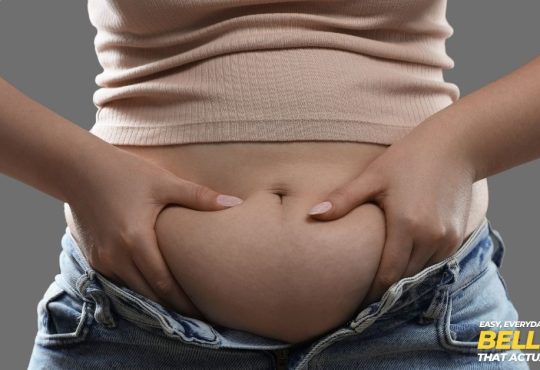Are you tired of high-impact workouts that leave your joints aching and your motivation fading? What if I told you that the humble walk — yes, just walking — might actually be better than running when it comes to lasting weight loss and reducing body fat? In this article, we’ll explore why walking may be the smart, sustainable choice for many people who want to shed pounds without the strain.
You might expect running to win every contest — after all, you burn more calories per minute, right? But there’s more to the story. You’ll discover how walking can be gentler on your body, easier to squeeze into your day, and still highly effective at trimming fat. And most importantly, you’ll learn how consistency beats intensity when it comes to long-term results.
1. Calories Burned: How Walking Stacks up Against Running
Running burns more calories per minute. For example, a 180-pound person may burn about 13.9 calories per minute jogging, compared with 9.7 calories per minute walking. That’s a noticeable gap — but this isn’t the whole picture.

Walk longer, burn as much: By extending your walk, you can match or even exceed the calorie burn of a shorter run. Walking 60 minutes daily at a brisk pace (about 3.5–4 mph) can burn around 1,800 calories per week, which is roughly equal to doing three 30-minute runs. Plus, walking is easier to sustain for longer periods without feeling worn out.

Calories add up: A 30-minute brisk walk burns about 150 calories. Done daily, that’s around 4,500 calories a month — close to 1.3 pounds of body fat lost, assuming you don’t increase your food intake. Over a few months, those small efforts lead to real, visible results.
You also recover faster from walking, so you’re more likely to stay consistent and stick with your routine — and that consistency is key for long-term fat loss.
Walking vs. Running: Calorie Burn Comparison
| Activity | Calories Burned (Per Minute) | Calories Burned (30 Mins) | Calories Burned (Per Week) | Impact Level | Consistency Level |
|---|---|---|---|---|---|
| Walking (3.5–4 mph) | ~9.7 | ~150 | ~1,050–1,800 (daily walking) | Low (Joint-friendly) | High (Easier to stick with) |
| Running (6 mph / 10-min mile) | ~13.9 | ~415 | ~1,245 (3x per week) | High (More stress) | Moderate (Needs recovery) |
- Note: Based on a 180-pound person. Individual results will vary based on weight, speed, terrain, and incline.
Bottom line: Walking steals background in total calories burned when it’s consistent and long enough. It’s not about burning the most in the shortest time — it’s about what you can realistically do day after day.
2. Joint Health: Easy on Your Body, Big on Results
Running puts 2.5 to 3 times more stress on your joints, especially your knees, ankles, and hips. Over time, this impact can lead to common injuries like shin splints, stress fractures, and joint inflammation, particularly if you’re new to exercise or have excess weight.
Walking, on the other hand, is much easier on your body. It puts only about 1.2 times your body weight on your joints, making it a low-impact activity that’s safe for nearly everyone — including older adults, beginners, and people recovering from injuries.
It also allows you to exercise daily with minimal risk, since you don’t need long recovery periods. This means you can burn more calories overall just by showing up consistently. Plus, walking supports your muscle and bone health while keeping stress hormones like cortisol in check — which is important for fat loss and overall well-being.
Walking vs. Running: Joint Impact & Injury Risk
| Factor | Walking | Running |
|---|---|---|
| Impact on Joints | Low (~1.2× body weight) | High (~2.5–3× body weight) |
| Common Injuries | Rare: mild joint strain, foot aches | Shin splints, stress fractures, runner’s knee |
| Recovery Time | Minimal — can walk daily | Requires rest days to prevent overuse |
| Risk Level for Beginners | Very Low | Moderate to High (especially with poor form or overtraining) |
| Long-Term Joint Health | Supports healthy aging and mobility | Can cause wear and tear if overdone |
| Best For | All fitness levels, including seniors or those overweight | Intermediate to advanced exercisers with joint resilience |
This visual comparison reinforces the idea that walking is better than running for people who want sustainable fat loss without putting their joints at risk.
If you want to lose weight without pain, swelling, or needing frequent rest days, walking is the steady and smart route to go.
3. Fat Burning vs. Carbs: The Science Behind the Burn
Walking, as a low-intensity exercise, taps into your body’s fat stores for energy more than running does. That’s because lower-intensity workouts allow your body to stay in the fat-burning zone — typically around 50–65% of your maximum heart rate.
In fact, a treadmill study showed that walking at about 60% of your max heart rate led to nearly double the fat oxidation compared to running at higher intensities. This means you’re burning more fat as a percentage of total calories — even if the total calorie burn is slightly lower.
Running, on the other hand, relies more on carbohydrates for quick energy and triggers the afterburn effect (EPOC), where your body keeps burning calories even after the workout ends. While that sounds great, it comes at a cost: higher intensity often leads to more fatigue and potential joint stress.
Interestingly, running may help suppress appetite better than walking. Studies show that walkers tend to eat back about 28% of the calories they burn, while runners only eat back around 11%. But this varies from person to person — and some runners may even feel hungrier after intense sessions.
Fat vs. Carb Burn: Walking vs. Running
| Category | Walking | Running |
|---|---|---|
| Primary Fuel Source | Fat | Carbohydrates |
| Heart Rate Zone | 50–65% of Max Heart Rate | 70–85% of Max Heart Rate |
| Fat Oxidation Efficiency | High – burns a higher percentage of fat | Lower – burns more total calories but less fat proportionally |
| EPOC (Afterburn Effect) | Low to Moderate | High – burns extra calories post-exercise |
| Appetite Response | May slightly increase hunger | May suppress hunger temporarily |
| Fat-Burning Duration | Longer, steady-state burn | Shorter, high-intensity burn |
| Best For | Steady fat loss, metabolic balance | Quick calorie burn, performance improvements |
- Note: The percentage of fat vs. carb burned varies by intensity, fitness level, and diet, but walking generally leans more toward fat as fuel.
In summary: While running may give you a short-term metabolism boost, walking helps your body stay in a steady fat-burning state — and with fewer hunger spikes, making it easier to manage your calorie intake throughout the day.
4. Sustainability and Consistency: The Real Game-Changers
Weight loss isn’t won in flashy sprints — it’s won by showing up day after day. Consistency beats intensity when it comes to long-term fat loss, and that’s exactly where walking shines.
Observational data confirms that both walking and running support overall health and weight control, but walking is more accessible, especially for beginners, older adults, and people managing joint or mobility issues. It’s a habit that’s easy to build — no gym membership or special gear needed.
A 2013 study found that walking led to significant weight loss across nearly all participant groups and was almost as effective as running for many women. In heavier individuals, running did produce up to 90% more weight loss per MET-hour, but the injury risk and recovery demands made it harder to sustain long-term.
Interestingly, studies showed that distance-based walking — like tracking daily steps or aiming for set miles — led to a 3.8% body weight loss over 10 weeks, which was comparable to running results. Plus, walking habits were easier to stick to over time, especially for those with busy lifestyles or low motivation for intense workouts.
Weekly Consistency Tracker: Walking vs. Running
| Day | Walking (30–60 mins) | Running (30 mins) |
|---|---|---|
| Monday | ✅ | ❌ |
| Tuesday | ✅ | ❌ |
| Wednesday | ✅ | ✅ |
| Thursday | ✅ | ❌ |
| Friday | ✅ | ❌ |
| Saturday | ✅ | ✅ |
| Sunday | ✅ | ❌ |
| Total Days | 7/7 Days | 2/7 Days |
| Estimated Weekly Calories Burned | 1,400–1,800+ | 800–1,000 |
- Key Insight: Even if walking burns fewer calories per session, doing it consistently adds up to more total fat burned — and fewer missed days.
Takeaway: If you walk consistently — even just 5 to 6 days a week — while runners only manage once or twice, walking delivers more total results over time. It’s not just about how hard you go — it’s about how often you show up.
5. Tips to Make Walking Work Like a Pro
Even if walking seems simple, there are smart ways to level it up and make it more effective for fat loss — without making it too intense or complicated. These tips help boost your calorie burn, activate more muscles, and keep your routine fresh and challenging.
5.1 Try Incline Walking
Walking on an incline — whether on a treadmill or uphill outdoors — engages your glutes, hamstrings, and calves more than flat walking. A recent test showed that walking at a 12% incline and 3 mph burned up to 40% more fat compared to running on a flat surface, which burned around 33% fat. Even a 5% incline makes a noticeable difference.
5.2 Add Intervals
Mix in short bursts of faster walking every 3–5 minutes — such as a 30-second speed push — to raise your heart rate and activate the afterburn effect (EPOC). This interval style keeps your body guessing and helps you burn more calories even after your walk ends.
5.3 Use Weighted Vests or Light Dumbbells
Wearing a weighted vest (about 5–10% of your body weight) or holding light dumbbells increases resistance without stressing your joints. This boosts muscle engagement and calorie burn, making your walk more effective without needing to go faster or longer.
5.4 Practice Power Walking
Power walking — moving at 4 to 5 mph with purposeful arm swings and strong posture — can match or exceed the calorie burn of light jogging, especially over longer distances. It also improves coordination and core strength, making it a full-body workout.
Pro Walking Strategy Checklist: Burn More Fat, Walk Like a Pro
| ✔️ | Tip | Why It Works |
|---|---|---|
| ⬜ | Incline Walking | Burns up to 40% more fat by engaging lower-body muscles and raising intensity. |
| ⬜ | Add Intervals | Boosts heart rate and activates the afterburn effect (EPOC) for more fat burn. |
| ⬜ | Wear a Weighted Vest | Adds resistance safely to increase calorie burn without joint stress. |
| ⬜ | Hold Light Dumbbells | Tones arms and increases energy output with every step. |
| ⬜ | Practice Power Walking (4–5 mph) | Matches light jogging in calorie burn; engages core and posture muscles. |
| ⬜ | Walk Longer When You Can | Time adds up — more minutes = more calories burned, especially at a steady pace. |
| ⬜ | Track Progress (steps, time, distance) | Keeps you motivated and shows how far you’ve come. |
Tip: Print this out, save it to your phone, or turn it into a weekly goal sheet. Checking off just 3–4 of these tips can significantly enhance your fat-loss results through walking.
6. The Real Secret: Diet + Movement = Results
While walking is a powerful tool for fat loss, it works best when paired with smart eating habits. According to the Mayo Clinic, walking alone can help with weight loss, but only when it’s done alongside healthy, portion-controlled meals and a calorie deficit.
A major Cochrane review also confirmed that people who combined exercise (like walking) with diet lost an additional 1 to 1.5 kilograms (2.2 to 3.3 pounds) compared to those who relied on dieting alone. This means movement enhances your results — but food is still the foundation.
Even with running, many people accidentally cancel out their hard work by overeating post-exercise — sometimes by as much as 300–400% of the calories burned. This shows that no matter how hard you train, you can’t outwork poor eating choices.
Calories In vs. Calories Out: Weight Loss Balance
| Factor | Walking Example | Running Example |
|---|---|---|
| Calories Burned (30–60 mins) | 150–300 calories | 300–500 calories |
| Calories Consumed (Average Meal) | 500–800 calories | 600–1,000+ calories (post-run hunger) |
| Net Result Without Diet Control | ➕ Calorie Surplus (Weight gain or plateau) | ➕ Calorie Surplus (even with intense effort) |
| Net Result With Diet Awareness | ➖ Calorie Deficit (Fat loss) | ➖ Calorie Deficit (Faster fat loss if managed) |
- Key Takeaway: You can walk every day, but if you’re eating more than you burn, the scale won’t move. Walking + a mindful diet = real, sustainable fat loss.
Rule of thumb: Whether you walk or run, it’s your overall calorie balance that determines success. Movement helps you burn more, but it’s your diet that controls what stays off.
7. Does Walking Preserve Lean Mass?
One of the lesser-known benefits of walking is its ability to preserve lean muscle mass while promoting fat loss — especially when done regularly and paired with enough protein intake.
Walking is a moderate-intensity activity that’s gentle on your muscles and nervous system, which means it doesn’t trigger the high levels of stress hormones like cortisol that intense workouts sometimes do. Lower cortisol levels help your body burn fat more efficiently without breaking down muscle tissue.
Since walking doesn’t require long recovery periods, you can do it daily, allowing for more frequent calorie burn while still maintaining muscle tone. It also encourages more movement throughout the day, which supports metabolic health and helps reduce muscle loss during weight loss phases.
Running, while effective for burning calories, tends to place more strain on muscles and joints, which can lead to muscle fatigue or breakdown without proper rest, recovery, and nutrition. It can help build lean muscle — especially in the lower body — but it’s not always ideal for preserving muscle during fat loss if overdone.
Muscle Preservation Tips While Walking
| ✔️ | Tip | Why It Matters |
|---|---|---|
| ⬜ | Eat enough protein (0.7–1g per pound of body weight) | Supports muscle repair and prevents loss during calorie deficit |
| ⬜ | Strength train 2–3x per week | Maintains lean muscle while walking burns fat |
| ⬜ | Don’t over-restrict calories | A mild deficit (300–500 calories/day) is safer for muscle retention |
| ⬜ | Stay consistent with walking | Frequent, low-impact movement helps preserve muscle tone |
| ⬜ | Get enough sleep (7–9 hours) | Crucial for muscle recovery and hormone balance |
| ⬜ | Stay hydrated | Dehydration can increase fatigue and muscle breakdown risk |
- Tip: Pair your daily walks with bodyweight moves like squats, lunges, or push-ups 2–3 times a week to reinforce lean muscle maintenance.
Bottom line: If preserving lean tissue while losing fat is your goal, walking provides a safer, more sustainable way to get there — especially when combined with strength training or bodyweight exercises a few times a week.
8. Psychological Wins: Mind, Mood, and Mindset
Walking isn’t just good for your body — it’s a major win for your mental and emotional well-being too. Research shows that even a 20- to 30-minute walk can reduce anxiety, lower cortisol levels, and boost feel-good brain chemicals like endorphins and serotonin. This is especially true when walking outdoors, where natural light and fresh air further improve mental clarity and mood.
Unlike high-intensity workouts that can leave you feeling drained or overwhelmed, walking is something you can do every day without dread. It gives you space to think, de-stress, and clear your mind, which helps build a positive relationship with exercise. The fact that it’s low-pressure and low-risk means you’re more likely to stick with it — and that daily consistency builds confidence, discipline, and motivation over time.
When your workouts leave you feeling better, not beaten up, it’s easier to stay on track — physically and mentally.
Mental Health Benefits of Walking
-
✅ Reduces stress and anxiety by lowering cortisol levels
-
✅ Boosts mood through increased serotonin and endorphin release
-
✅ Improves focus and mental clarity — perfect for clearing brain fog
-
✅ Enhances sleep quality, especially with regular evening walks
-
✅ Increases confidence through daily accomplishment and routine
-
✅ Supports emotional balance by offering a natural “reset”
-
✅ Reduces symptoms of depression in mild to moderate cases
-
✅ Promotes mindfulness when walking outdoors or in nature
Bonus Tip: Try walking without your phone or headphones occasionally to fully engage with your surroundings — it can have a calming, meditative effect.
9. When Running Still Makes Sense
Don’t get me wrong — running definitely has its perks, especially for people with specific fitness goals or limited time. It’s a great option when you’re trying to maximize calorie burn in a shorter session. A 30-minute run can burn more than double the calories of a casual walk, making it ideal for those on a tight schedule.
Running also delivers a stronger afterburn effect (EPOC), meaning your body continues burning calories for hours after your workout. Plus, the higher intensity of running improves cardiovascular endurance, strengthens your heart, and helps build your VO₂ max — your body’s ability to use oxygen efficiently.
If you genuinely enjoy running, feel physically up for the challenge, and can do it without dealing with constant soreness or injuries, there’s nothing wrong with making it part of your routine. The key question is: can you maintain it consistently without burning out? Because even the best workout won’t help if you can’t stick with it over the long haul.
10. Real-World Comparisons
Let’s break it down with a simple example. A brisk 60-minute walk can burn around 300–400 calories, depending on your pace and weight. A 30-minute run, on the other hand, can burn 400–500 calories. While running burns more in less time, walking every day can easily outpace running a few times a week in total weekly calorie burn.
For instance, walking daily for a week could burn 2,100–2,800 calories, while running just three times a week might only total 1,200–1,500 calories. That difference adds up over time, especially if your goal is fat loss through consistency.
Research also shows some gender-based differences. A study found that men experienced slightly more weight loss from running, possibly due to higher intensity levels. But women saw nearly equal results from walking, especially when they stuck with it regularly. This suggests that for many people — especially women — walking can be just as effective as running, without the physical toll.
Weekly Calorie Burn: Walking vs. Running
| Activity | Calories Burned per Session | Frequency (per Week) | Total Weekly Burn |
|---|---|---|---|
| 🚶♀️ Walking (60 mins) | 300–400 calories | 6–7 days | 1,800–2,800 calories |
| 🏃♂️ Running (30 mins) | 400–500 calories | 2–3 days | 800–1,500 calories |
Takeaway: Even though running burns more per session, daily walking wins with consistency — and it’s easier on your body. You’ll likely burn more fat overall without the risk of burnout or injury.
- Pro Tip: If you walk every day and control your calorie intake, you could create a weekly deficit large enough to lose up to 1 pound per week — steadily and safely.
Bottom line: If you’re consistent, walking can match or even outperform running in real-world fat loss — with less strain and better sustainability.
When to Walk vs. Run
🚶♀️ Choose Walking If…
-
✅ You’re new to exercise or easing back into a routine
-
✅ You have joint pain, injuries, or mobility concerns
-
✅ You prefer low-impact, stress-free movement
-
✅ You want a daily habit you can stick with long-term
-
✅ You’re focused on steady fat loss and preserving lean muscle
-
✅ You use walking as a mental reset or stress relief
🏃♂️ Choose Running If…
-
✅ You have a solid fitness base and no injury risks
-
✅ You need high-calorie burn in a shorter time
-
✅ You’re training for performance or endurance goals
-
✅ You enjoy intensity and don’t mind recovery days
-
✅ You’re motivated by competition, speed, or structure
-
✅ You want to increase your cardiovascular capacity quickly
Pro Tip: You don’t have to choose just one — some people walk most days and add a short run once or twice a week for variety and intensity.
Conclusion
Walking is better than running — not because it burns more per minute, but because it’s gentler, safer, easier to stick with, and still highly effective for fat loss and consistent calorie burning, especially when paired with good nutrition. You can boost its power with incline, intervals, or power walking, achieving results comparable to running while reducing injury risk.
So if you’re seeking lasting, manageable weight loss, walking might just be the smarter path. It’s accessible, consistent, and kind to your body — and that’s a recipe for long-term success.
Walking might feel simple, but its long-term impact can be profound. Stick with it, eat well, mix it up, and you’ll see real progress—and feel good doing it.
Sources:





